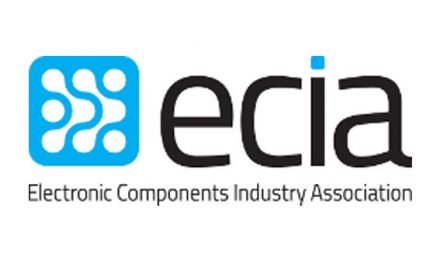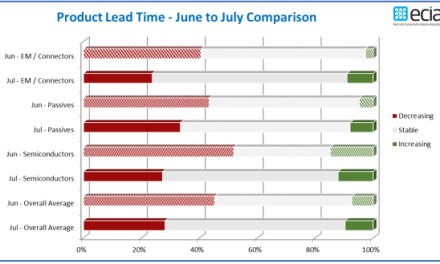The Critical Effort to Combat Illicit Chip Diversion
In the roughly two-and-a-half years since Russia invaded Ukraine, the United States and other likeminded governments have imposed far-reaching export controls and sanctions intended to choke off Russia’s access to the technologies needed to fuel its aggression. The U.S. semiconductor industry is a big part of that effort and has been working in close partnership with these governments to prevent Western chips from making their way into Russia’s hands and onto the battlefield. Recently, representatives from Canada, the European Union, France, Germany, Italy, Japan, the United Kingdom, and the United States governments (the G7) released new guidance to assist industry in identifying Russian evasion tactics and in supporting the success of their coordinated export controls and sanctions actions.
SIA and our member companies strongly oppose the illicit diversion and misuse of their products to perpetrate Russia’s military aggression. And we recognize that tackling this problem is about more than just complying with the letter of the law. That is why our companies are deploying a range of “compliance-plus” tactics to counter this problem. In partnership with government and civil society groups, trade compliance teams within SIA companies continue to innovate their approaches to due diligence, customer and distributor screening, and supply chain tracing, as well as sharing information with relevant authorities and amongst industry peers to tackle this issue.
The Challenge
Government restrictions and industry efforts early on in the war initially led to a 90% drop in global exports of semiconductors to Russia. But, according to research and media reports as well as trade data, Russia continues to find ways to obtain Western chips, aided by malign actors around the globe.
The sheer global ubiquity of semiconductors underscores the challenge we face. According to World Semiconductor Trade Statistics, the semiconductor industry shipped over 3 trillion chips globally between 2021 and 2023. These volumes will only increase as global demand for semiconductors continues to boom, with global sales projected to reach $1 trillion by 2030. Trillions more chips – many of which were sold and shipped years before Russia invaded Ukraine – remain in circulation, often stockpiled in warehouses. Mature node, or so-called “legacy” chips, have a shelf life that can last decades. So, it is unsurprising some chips recovered from Russian weapons in Ukraine were manufactured well before the beginning of the conflict, and in some cases by companies that no longer exist.
Russia also has decades of experience evading export controls and sanctions, building a system of transshipment routes, cultivating networks of diverters in third countries, and employing sophisticated deception tactics. Malign actors go to great lengths to circumvent government restrictions and established company compliance actions, evading even the most sophisticated screening and due diligence efforts.
Industry Action – “Compliance-Plus”
The U.S. semiconductor industry supports and remains fully committed to complying with all export controls, sanctions, and other government measures that restrict Russia’s access to semiconductors necessary to sustain its war effort against Ukraine.
But more than that, SIA member companies are constantly adapting their tools and approaches to counter Russia’s ever-evolving evasion tactics by employing “compliance-plus” approaches to close off pathways for diversion of their products. Since the beginning of the conflict in Ukraine, our companies have dedicated significant additional resources to monitor, prevent, and tackle diversion issues throughout the supply chain in real time. Trade compliance teams deploy software monitoring solutions that aid in due diligence such as scouring the web looking for unauthorized resale of products, working directly with retailers to remove listings, tracing the origins of resales, and taking appropriate action when bad actors are identified.
SIA member companies are also continuously upleveling their customer and distributor screening practices. In fact, many companies were screening against addresses to avoid shipping to shell companies even before the U.S. Commerce Department created a new regulatory framework to include high diversion risk addresses on the list of entities subject to export restrictions (the “Entity List”). Industry also welcomes the efforts to compile and make more available screening resources like the Trade Integrity Project (TIP), which the Commerce Department recommended in its recently released guidance to industry for identifying transaction parties of diversion risk.
Industry players have also proactively stopped shipping to companies – including brokers and resellers – identified through their own internal processes as having “red flags,” even if they are not listed on the Treasury Department’s Specially Designated Nationals (SDN) sanctions list or the Commerce Department’s Entity List. Chip companies have additionally strengthened their standard terms and conditions, including deployment of greater enforcement mechanisms, prohibiting their customers from reselling their chips, and enhancing the end-use certificates and statements they require customers to provide, using a tiered certification process based on risk. This information helps companies build a robust chain of custody around the sale and use of their products for either a single transaction or set of similar transactions.
In addition, SIA member companies are working closely with their distributors to monitor and validate compliance throughout the supply chain. For example, chip companies regularly audit distributors’ sales data, including customers, locations, existing inventory, and items sold. On-site audits to review distributors’ policies, procedures, and practices are also an effective tool to enhance distributor compliance with company policies on export controls. When distributors and other customers do not comply with trade controls obligations, SIA member companies act quickly to suspend or terminate commercial relationships if red flags cannot be cleared or adequately addressed. These efforts are made more difficult, however, in jurisdictions around the world that treat routine due diligence and traditional business activities as espionage.
Lastly, our member companies have internal systems to ensure employees have legitimate recourse to report information about illicit diversion, including doing so anonymously. SIA member companies also are forward leaning in encouraging employee participation in their day-to-day compliance programs and raising concerns to leadership. The companies investigate all claims and work to drive closure for any finding resulting from their investigations.
The Path Forward
This is a difficult, complex, and evolving challenge that requires a sustained, concerted, and multifaceted response. In this regard, we appreciate that the U.S. and other governments continue to express strong concerns about transfers of Western semiconductors to Russia by businesses in third countries. We echo the call for all governments to take the necessary actions needed to curtail these illicit flows and ensure the healthy functioning of global semiconductor supply chains.
SIA and our member companies are clear-eyed about the geopolitical environment in which our industry must operate globally. And we remain unwavering in our commitment to do our part to prevent illicit diversion of chips to Russia and other countries that support Russia’s war effort in Ukraine, working together with governments, civil society, and other stakeholders.












